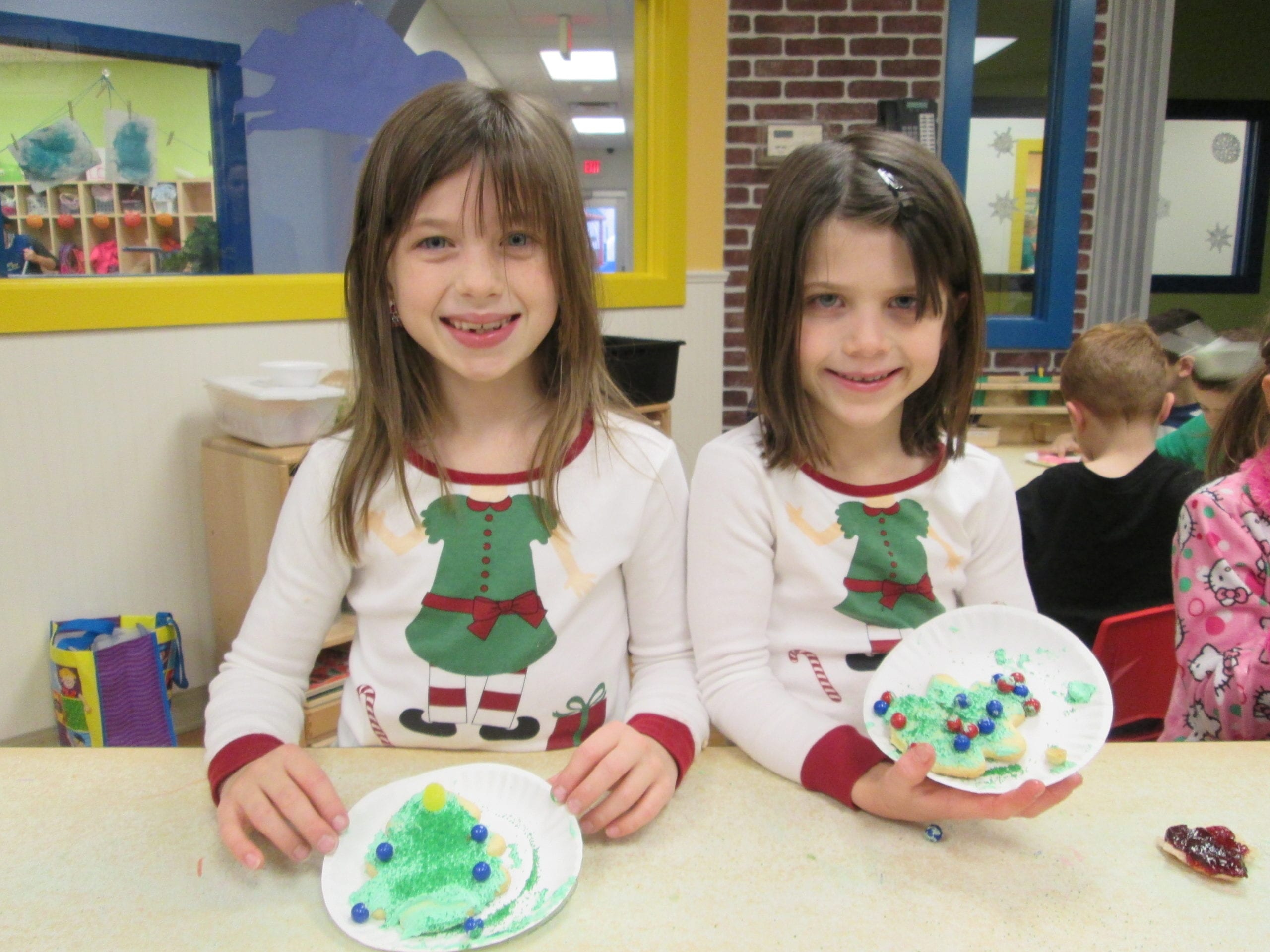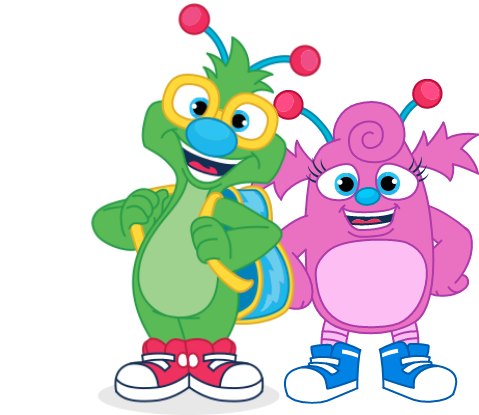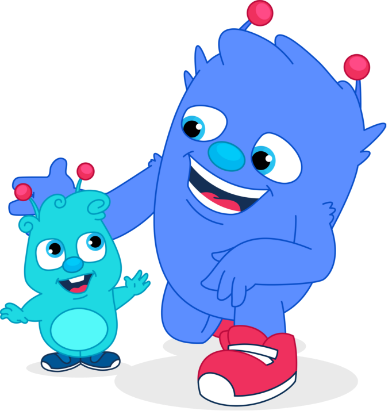November 1, 2016
Celebrating the Holidays at Doodle Bugs!
“It’s the most wonderful time, of the year…” Holidays are a joyous time of year – especially at Doodle Bugs! It’s a busy time, too, and there can be lots to keep track of. Below is a list of all of the center event details, holiday information, ‘why’s’ behind the ‘what’s’, and important dates and times for the upcoming holiday season.

First, a little background:
“Why do we celebrate holidays at all? It’s not appropriate.”
There are lots of great talking points/background info on why we celebrate holidays here, but put simply, we celebrate because when thoughtfully used, holiday celebrations contribute to an anti-bias curriculum. Learning that a friend can celebrate a different holiday (or the same holiday in a different way) and still be a friend is a really meaningful lesson for young children! Our goal in teaching and learning about all different holidays is to build community within each classroom and center – this happens through learning about and celebrating each family and their own traditions and celebrations together.
What’s “allowed” for holiday décor?
- As part of our Traditions and Celebrations Unit, we learn about Christmas, Hanukkah, and Kwanzaa; we invite families to share their traditions. Your décor and classroom activities can and should reflect all of these celebrations, with a strong focus on how children’s families celebrate. As noted in the SOTW, our main message is “My family is valued at my school.”
- As a secular school, we do not teach religious content. Our Christmas study introduces children to traditions like making cookies, decorating a tree, celebrating with family and making and giving gifts, but does not teach about Christ. Similarly, our Hanukkah study also serves to introduce children to traditions like making cookies, lighting a menorah, celebrating with family and making and giving gifts. Use the curriculum as your guide, adapting for children’s development and to embrace their family traditions.
- Put simply, all secular content is “allowed” – keep it simple, age-appropriate, and related to the curriculum. Your goal is joyful, meaningful, child-friendly celebration, focused on families – so ask yourself “Does this make sense/is this relevant to the children in my class?”
- Related: “When is it OK to decorate?”
- Decorating/celebrating too early can create undue stress on children. As a general rule, it’s OK to transition to holiday décor starting the day after Thanksgiving, but pace yourself! The Unit starts with “Cookies” purposely because it’s a nice segue/intro to the theme and poises you for a successful “Milk & Cookies” event – but isn’t “CHRISTMAS OVERLOAD”.
- Relate your décor to classroom activities – and again, your goal is joyful, meaningful, child-friendly celebration, focused on families – so ask yourself “Does this make sense/is this relevant to the children in my class? Does my classroom reflect the (balanced) curriculum content?”
- Related: “So, snowflakes, mittens, etc. are always OK then?”
- It depends. Yes, snow is “safe” in that it’s secular – but it only makes sense if it’s relevant to children. Wait for it to snow (in NY and PA), and/or relate it to a good book.
- Relate your décor to classroom activities – and again, your goal is joyful, meaningful, child-friendly celebration, focused on families – so ask yourself “Does this make sense/is this relevant to the children in my class?”
- Related: “When is it OK to decorate?”
“I don’t celebrate any of these holidays and/or children in my class do not celebrate these holidays.”
- That’s EXACTLY why our Unit is “Traditions and Celebrations” not “Holidays”. Use the curriculum as your guide to focus on traditions (which can be as simple as “I visit my grandma on Sundays”) and celebrate what is universally true – everyone can find a genuine connection to cookies, gift making and gift giving, family, thankfulness, and joy.
- Keep in mind that we are not “teaching children to celebrate Christmas” or “teaching children to celebrate Hanukkah” – rather, our curriculum introduces information about these holidays within a framework of “All families spend time/celebrate together”.


Now, the specifics:
Tues. 12/6 – St. Nicholas Day
- The legendary figure of St. Nicholas is derived from Nicholas of Myra, who officiated as a bishop in 4th century Greece and is the real-life model for Santa Claus. During his lifetime he developed a reputation for gift-giving by putting coins into other people’s shoes, which accounts for many of today’s Christmas traditions that involve leaving gifts – including candy, cookies, small toys, or fruit – in stockings, socks, shoes or bags on December 6. Some Europeans who immigrated to the United States brought with them beliefs, customs and practices associated with St Nicholas’ Day. It has been recorded that celebrations associated with the observance took place in cities such as New York in the early 1800s.
Mon. 12/12 – Poinsettia Day
- Poinsettia Day was first celebrated in 2002. Poinsettia’s came to America from Mexico in 1828, and have become the #1 selling potted plant in the US and Canada! In Mexico, Poinsettia’s connect to the legend of a young girl, distraught about not having anything with which to honor the Baby Jesus in a Christmas Procession. An angel tells her that any gift given with love is a wonderful gift (an important lesson for us all). Later, the weeds she gathers by the roadside to place around the manger miraculously transform into the beautiful red star flower we think of as Poinsettias. Click here for more detailed information!
Tues. 12/13 – St. Lucia Day
- Lucia is an ancient mythical figure, who brings light in the dark Swedish winters. Modern day celebrations are generally associated with Sweden and Norway, but are also observed in other European countries. The Lucia celebrations include a candlelit procession, singing songs, and also include ginger snaps and sweet, saffron-flavored buns (lussekatter) shaped like curled-up cats and with raisin eyes. In the United States, many families of Scandinavian ancestry celebrate by placing cookies on the mantel in their home.
Weds. 12/14 – Milk & Cookies Sing-a-Long Event 5:30-7pm
- Each classroom will perform a song or rhyme at this special annual event! Enjoy some milk and cookies and some great tunes, too. See your Center Director for center-specific details and to sign up for a song.
Thurs. 12/15 – National Cupcake Day
- Cupcakes have been an American culinary icon since the 19th century. Prior to cupcakes, ingredients used in baking were primarily weighed rather than measured. These delightful treats shifted the art of baking from weighing to measuring ingredients. For many years, cupcakes were known as one-two-three-four cakes because of their recipe: one cup of butter, two cups of sugar, three cups of flour, four eggs, plus one cup of milk and one spoon full of baking soda. This formula is still the traditional cupcake recipe that many people use today.
Thurs. 12/22 – Classroom Holiday Parties
- Enjoy a festive celebration with your little friends – and be sure to invite their parents as well! Focus on celebration and togetherness instead of food and sugary treats – sing holiday songs, play games, and enjoy this wonderful time of year!
Fri. 12/23 – ‘Twas the Night Before Christmas Read Aloud
- We will gather together to share in a special read-aloud of this classic Christmas tale! See your Center Director for center-specific details.
Sat. 12/24- Hanukkah begins
- Hannukah, also known as the Festival of Lights (celebrated in the Jewish religion) is observed by the kindling of the lights of a menorah or hanukiah, one additional light on each night of the holiday, progressing to eight on the final night. After lighting the candles, singing other Hanukkah songs is customary in many Jewish homes. In North America and in Israel it is common to exchange presents or give children presents at this time. In addition, many families encourage their children to give tzedakah (charity) in lieu of presents for themselves. Other Hanukkah festivities include playing dreidel and eating foods such as doughnuts and latkes.
Sun. 12/25 – Christmas
- Christmas (beginning in the Christian religion) is now celebrated worldwide, but many of the traditions that we celebrate today have their roots elsewhere (mid-winter festivals, the Yule festival, etc.). Many people decorate their homes and gardens with lights, Christmas trees and much more. It is common to organize a special meal, often consisting of festive foods, for family or friends and exchange gifts with them. Children, in particular, often receive a lot of gifts from their parents and other relatives and the mythical figure Santa Claus.
Mon. 12/26 – Kwanzaa begins
- Kwanzaa is a holiday celebrated every year from Dec. 26-Jan. 1. It is based on the year-end harvest festivals that have been a part of African tradition for thousands of years. Each day of Kwanzaa honors a different principle: Unity, self-determination, collective work/responsibility, cooperative economics, a sense of purpose, creativity, and faith. Families celebrate a feast of Karamu on December 31st with traditional African dishes. Colors traditionally associated with Kwanzaa are red, green, and black.
Tues. 12/27 – Kwanzaa Celebration & Parade
- We will march together in a Kwanzaa Parade – invite students to dress in red, green, and black if they’d like! Students will show off their handmade props and celebrate this special holiday.
Weds. 12/28 – Hanukkah Read Aloud
- Everyone will gather together to celebrate the Festival of Lights with a thematic read-aloud! See your Center Director for center-specific details.
Fri. 12/30 – 2017 Ball Drop & New Year’s Celebration
- We will celebrate the end of 2016 and usher in 2017 with our annual Ball Drop and New Year’s Celebration! See your Center Director for center-specific details.
Sat. 12/31 – New Year’s Eve
- New Year’s Eve is observed worldwide with celebratory gatherings, a count down to the beginning of the new year, and the traditional setting of New Year’s resolutions, or goals for the coming year.

Keeping your classroom routine consistent and giving your students lots of support and TLC is even more important during this time of the year! Check out this 15-minute video about how to ‘FLIP Your Holiday Script‘ – it’s a great FLIP-IT refresher!
Last, but certainly not least, check out our upcoming School Age Vacation Club details! Our school agers will be enjoying fun-filled doodle days during vacation days from school.

 1.866.668.5111
1.866.668.5111  6:30 am - 6:00 pm
6:30 am - 6:00 pm 
 Give a Happy High Five!
Give a Happy High Five!


